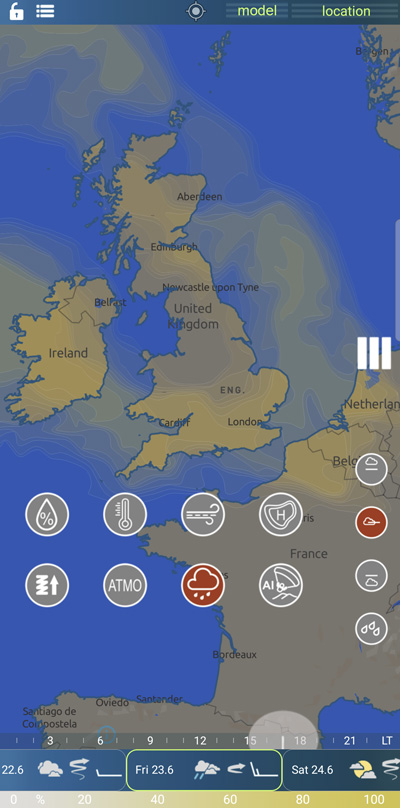How to do it
Select the main map icon with clouds and rain and select the icon for the middle cloud. The middle cloud cover will be displayed in the coverage range of 0..100% Additional cloud and precipitation maps can be added or removed by clicking on the corresponding icon.
On the formation of middle clouds.
Mid-level clouds are clouds that typically form at altitudes between 2,000 to 6,000 meters (6,500 to 20,000 feet) above the Earth's surface. These clouds appear as a layer or a patch of clouds with a varied texture and can have different shapes, such as altocumulus and altostratus clouds.
The formation of mid-level clouds is influenced by similar factors to other cloud types:
1. Moisture: Mid-level clouds form when moist air is lifted to a level in the atmosphere where it cools and condenses. This can occur due to frontal systems, lifting along mountain slopes, or large-scale upward motions in the atmosphere.
2. Condensation: As the moist air rises and cools, it reaches its dew point temperature, causing water vapor to condense into visible cloud droplets or ice crystals. These droplets or crystals then cluster together to form the mid-level cloud layer.
3. Stability: The stability of the atmosphere plays a role in the formation and maintenance of mid-level clouds. Generally, mid-level clouds form in stable atmospheric conditions where the air is neither strongly rising nor sinking.
4. Atmospheric Dynamics: The dynamics of the atmosphere, such as wind patterns and atmospheric disturbances, can also contribute to the formation and arrangement of mid-level clouds.
Mid-level clouds can have various appearances, ranging from puffy and globular altocumulus clouds to more uniform and featureless altostratus clouds. They often indicate changes in the weather and can be precursors to precipitation or other atmospheric phenomena.
It's important to note that cloud formation is a complex process influenced by multiple atmospheric factors, and the specific formation mechanisms of mid-level clouds may vary depending on the region and local weather conditions.